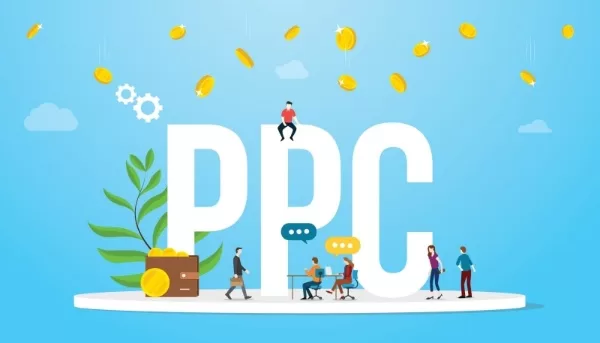Insights
Seasonal PPC and Reasons Why Should Pay Close Attention To It
On Digitals
22/08/2025
49
Seasonal PPC is one of the smartest ways to make sure your ads hit at the right time, with the right message, for the right audience. Since customers don’t shop the same way in July as they do in December, your advertising strategy shouldn’t stay the same either. Aligning your pay-per-click campaigns with seasonal demand lets you maximize visibility, boost conversions, and stretch your ad budget further when it matters most. But how? And do things change in 2025? Let’s check it out.
What Exactly Is Seasonal PPC?
Seasonal PPC means tailoring your pay-per-click campaigns to match those predictable shifts in what customers want and when they want it. Instead of running the same old ads all year long, you’re getting strategic about launching time-sensitive promotions around holidays, events, or those busy periods that happen in your industry.
Take this for example: a retailer cranks up their ads around Black Friday, while a travel company pushes hard during summer vacation planning season. Even service businesses like tax advisors or universities can benefit big time by adjusting their campaigns around annual deadlines or enrollment periods.
When you sync up your seasonal PPC efforts with these natural buying cycles, you’re meeting customers exactly where they are. Your ads become more relevant, more timely, and way more cost-effective.

A rough definition of seasonal PPC strategies
Why Your Business Should Jump on Seasonal PPC Trends
Consumer behavior changes with the seasons, and if you’re not paying attention to these shifts, you’re basically throwing money out the window. Seasonal PPC helps you stay visible exactly when buyers are actively searching for what you offer.
Nearly 58% of shoppers start planning early, around 75% research products regularly, and about 59% already know what they’ll purchase by December. These stats show exactly why a generic, one-size-fits-all PPC strategy just doesn’t work as effectively as a targeted seasonal PPC gameplan.
When you tap into seasonal PPC trends, you can budget smarter, create ads that feel relevant in the moment, and stay competitive during those peak periods when everyone’s attention is focused on buying. It’s not just about showing up; it’s about showing up at the perfect time with exactly the right message.
When Should You Focus on Seasonal PPC?
Now, don’t think seasonal PPC is just about Black Friday or Christmas. Sure, those moments are huge, but there are opportunities hiding all year long. Back-to-school shopping, tax season, summer travel planning, healthcare enrollment periods, these are all golden chances to capture attention, depending on what your business is. The trick is thinking beyond the typical retail calendar to find what works for your industry.
Different business types have their own seasonal sweet spots too. Retailers and gift shops usually crush it in Q4. Travel businesses see their best numbers during summer and spring break. Insurance providers typically get busy between October and December because of open enrollment. When you know exactly when your audience is most active, you can put the right message in front of them at precisely the moment they’re looking for it.

Benefits of leveraging seasonal PPC advertising
How to Forecast and Plan Your Seasonal PPC Strategy
Predicting Seasonal Peaks Using Your Data
The secret sauce for anticipating demand? Look at what happened before. Tools like Google Ads dashboards or GA4 let you spot those year-over-year trends and identify spikes in conversions, cost-per-click, or impressions. But don’t stop there. Talk to your sales team and account managers to see the actual data. They’ve got insights that can help you understand the human side of these seasonal PPC patterns.
Getting Ready for Seasonal PPC Budget Swings
Here’s something important, seasonal PPC is effective, it also often costs more, so you need to be smart about budgeting. Let’s say you’re expecting a 25% jump in traffic and a 50% increase in cost-per-click. Your budget might need to grow by around 75% just to keep your performance steady. If expanding your budget isn’t realistic, consider moving money from slower months to cover your peak periods.
But seasonal PPC preparation goes way beyond just the budget. Have your creative assets ready ahead of time, adjust your bidding strategies before the rush hits, and make sure your team is prepared for the increased workload. The more you set up in advance, the smoother your seasonal PPC campaigns will run when crunch time arrives and you will be able to save some of your budget as everything can hit the ground running immediately.
What Tactical Steps Make Your Seasonal PPC More Effective?
Okay, so you’ve got your seasonal PPC strategy mapped out and your budget allocated. Now what?
Crafting Ad Copy and Creatives That Actually Work
Don’t just tweak your existing ads for seasonal campaigns, because you will have to tweak them again after the peak period passes. Also, no two peak periods are the same anyway.
Start fresh with brand new, season-specific ad copy. This keeps your data clean and makes it way easier to measure what’s actually working because things change constantly. Take advantage of responsive ad features to really highlight your seasonal messaging, we’re talking festive headlines, limited-time offers, eye-catching callouts, relevant sitelinks, and promotional assets that make people want to click.

How to craft an effective seasonal PPC campaign
Keeping Your Landing Pages in Sync
This tip is not solely for seasonal PPC, but here goes. Your landing pages need to mirror your seasonal PPC ad copy perfectly. The messaging, visuals, and offers have to stay consistent from click to conversion. A mismatch between what your ad promises and what your landing page delivers is basically a conversion killer. Plus, make sure those pages load fast and can handle the traffic surge that comes with successful seasonal campaigns.
Leveraging Audiences and Remarketing for Maximum Impact
Don’t make the mistake of waiting until the rush begins to think about audiences. Start building those remarketing lists well in advance. Segment your previous buyers, cart abandoners, and newsletter subscribers into different groups. Then, expand your reach with lookalike or intent-based audiences built from these high-value segments. This way, your seasonal PPC ads aren’t just hitting warm leads – they’re also reaching similar new prospects who are likely to convert.
Can You Actually Automate Seasonal PPC?
You can, and you should. Scheduling ads ahead of time means you’ll never miss those key seasonal windows. Pre-program your campaigns to launch or pause seamlessly without you having to babysit them. Set up alerts for budget depletion or sudden performance drops so you can jump in and fix things instantly when something goes wrong.
But here’s the thing about automation, you still need to stay hands-on when your seasonal PPC campaigns are live. Track hourly reports, watch those ROAS fluctuations, and keep an eye on conversion metrics. If performance starts to drop, don’t wait around, because it can cost you way more than the normal periods. Optimize fast by adjusting bids, reallocating budget, or swapping out creatives on the fly to stay ahead of your competitors.
What Metrics Actually Tell You if Your Seasonal PPC Succeeded?
Start with the basics: conversions, return on ad spend (ROAS), and cost-per-click (CPC) trends. These will tell you if your campaigns were efficient and profitable. Don’t forget to check ad positions and Quality Score changes too, because strong performance here usually signals that your ads were relevant and well-optimized.
But that’s just the advertising side of things. You need to dig deeper into what happens after the click. Look at your landing page performance, bounce rates and load speeds matter way more during high-traffic periods. If people are bouncing off your page too quickly, even the best seasonal PPC ad won’t save you.
Additionally, always benchmark your results against last year or your usual off-season numbers. A year-over-year comparison gives you the clearest picture of actual growth and progress, and these year-over-year numbers will come into play next year to identify what your peak periods are.

What to note when running seasonal PPC campaigns
What to Do When You Missed the Peak Window
Let’s say the season flew by and you didn’t get your seasonal PPC campaigns launched in time. Are you completely out of luck? Not even close. Post-season strategies can still deliver solid results. Think about capturing those late buyers with follow-up messaging or clearance promotions. Remarketing works really well here too, especially to keep those warm audiences engaged even after the peak season ends.
The silver lining here is that missing one season gives you tons of insights to prepare for the next one. Review what your competitors did, note customer behavior trends, and adjust your ad copy or creatives so you’re ready to launch earlier next year. Seasonal PPC is a cycle (for the most part), and even if you miss a window, you can use it as a learning opportunity to come back stronger.
FAQs About Seasonal PPC
How do I figure out my business’s seasonal peaks beyond just holidays?
Look at your year-over-year sales data, ad platform dashboards, and Google Analytics trends to spot traffic or conversion spikes. Also think about industry-specific cycles like travel bookings in summer, tax prep in spring, or insurance shopping in Q4.
Do I always need to boost my budget, or can I just optimize better?
Increasing budget during peak demand is ideal, because you can theoretically earn more, but it’s not your only option and it’s also quite risky if you’re a new or small business. If budgets are tight, you can reallocate money from low-performing months, tighten your audience targeting, or focus on your highest-converting keywords.
How do I keep my ads relevant to each season without messing up my historical data?
Instead of editing old ads, create completely new seasonal campaigns or ad groups. This way, your historical data stays clean and you can compare seasonal PPC performance year-over-year.
Can smart bidding handle seasonality, or should I manage bids manually?
Smart bidding does adapt, but it can lag during sharp, short-term spikes. Google Ads offers “seasonality adjustments” that give the algorithm a heads-up so your bids stay competitive without losing efficiency.
What if my landing pages aren’t ready when seasonal PPC campaigns launch?
You’re basically wasting clicks if your landing pages aren’t aligned with your ads. At minimum, update headlines, offers, and calls-to-action to reflect seasonal relevance. A fast-loading, mobile-friendly page with clear conversion paths is absolutely essential.
How soon should I start remarketing before the season hits?
Start building remarketing lists weeks in advance. Capture audiences like past buyers, cart abandoners, and site visitors so you have warm segments ready to target once the season peaks.
Pick Out the Best Times in the Year for Your Seasonal PPC Strategies
Seasonal PPC is more than just a holiday marketing tactic because it’s not only about hopping on a trend. You need to align ads with consumer demand, maximize budgets, and stay competitive when it matters most. Understanding seasonal peaks, planning ahead, and tracking the right metrics can set your campaigns up for stronger performance year after year. Whether it’s back-to-school, tax season, or Black Friday, smart seasonal PPC ensures your brand is visible when customers are ready to act.
On Digitals, an experienced digital marketing agency in Ho Chi Minh City, is well-versed in PPC strategies that don’t just follow seasonal trends but make the most of them. Our PPC management service is designed to help you forecast, plan, and execute campaigns that bring measurable results. From smart bidding adjustments to creative ad copy and performance tracking, we make sure your investment delivers.
NEWEST POSTS
- Video Campaign Google Ads: A Practical Guide to Strategy, Formats, and Optimization
- Small Business Branding – 4 Strategies To Boost Your Brand!
- A Complete Guide to Crafting a Powerful Personal Branding Statement That Stands Out
- Brand Identity Explained: Core Definition, Components, and Strategic Value
- Benefits Of Personal Branding – 8 Advantages You Must Know
Read more
